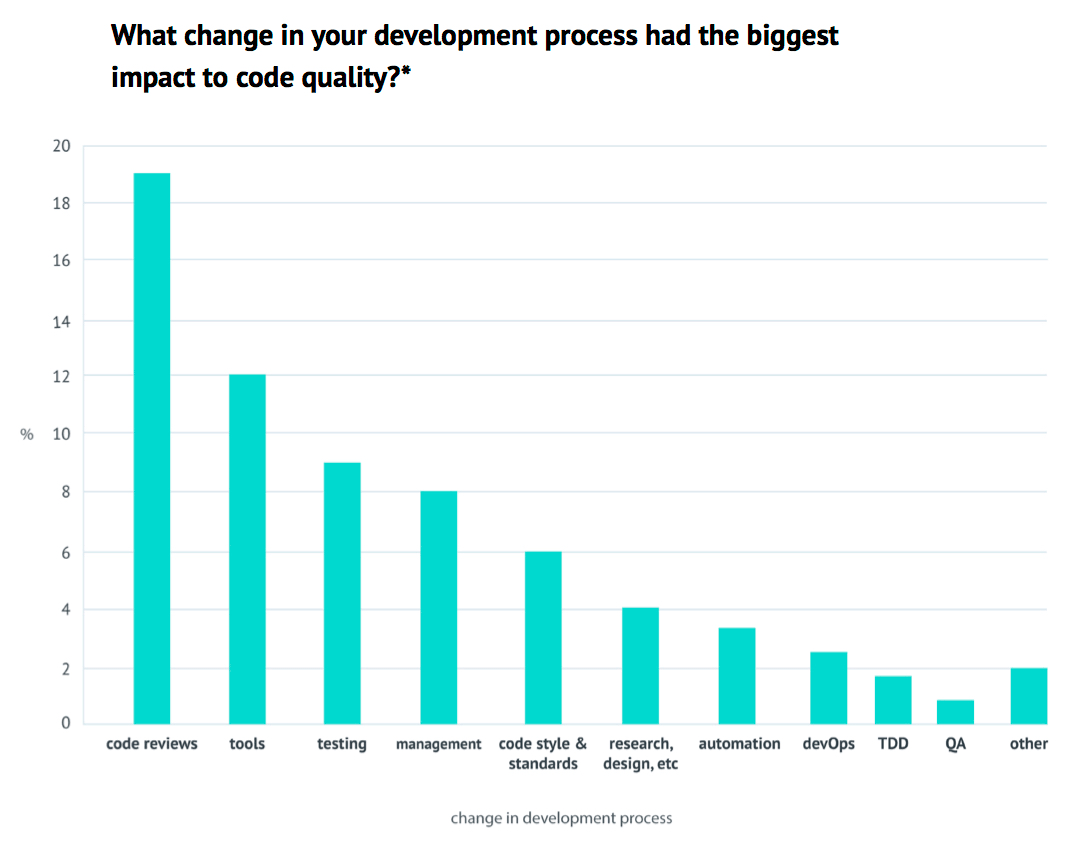
As much as we’d love it to be true, developers don’t actually spend all day furiously coding new features and functionality.
In reality, the majority of a developer’s time is spent on other tasks. Things like meetings, planning sessions, code maintenance, and fixing bugs all interfere with building new code.
Companies shouldn’t expect developers to churn out new features and functionality at a constant, breakneck speed without making sacrifices on code quality or overall team productivity.
So how do you move fast, and not break things? By working smarter, not harder.
Chatbots are your friend, not your enemy
Managers and developers who are unaware of the full power of chat in software development workflows might view chat applications as a distraction. And that’s a shame, because although these chat channels will contain cat gifs every now and then, they have actually become a powerful business tool. Using chat helps developers communicate more effectively and boosts team productivity.
Tasks outside of the code editor can now be done inside the chat application itself.
Chat applications can help teams complete previously manual tasks such as monitoring the status of builds, deploying code, receiving real-time error alerts and showing commit histories and activity. Permissions can also be shared through a centralized bot, instead of individual employees who might come and go.
Just make sure you don’t get overloaded with channels and notifications that need your attention, or you might lose more than you gain here.
Drastically shorten your debugging time
Imagine a bug tracker that automatically finds all the bugs present in your applications and spits out a to-do list for your team to fix them, perfectly ranked by how badly they are affecting your customers.
That’s essentially what error tracking tools like Raygun will do for you. Helping you fix your software problems with greater speed and accuracy.
It’s like real-time user feedback for developer teams.
Developers can lose hours, days or even weeks trying to find the root cause of errors affecting users.
Relying on log files, or non-technical customers trying to explain issues via support tickets, is a sure-fire way to lose countless hours. Time that would be better spent coding new features and functionality.
Getting started with error and crash reporting software like this is also incredibly easy for teams to adopt. A few lines of code added into your application is all it takes to see every issue affecting your customers alongside detailed diagnostics on how to fix the problem.
Slashing the time it takes to identify and fix a problem to minutes, rather than hours.

Spend WAY more time planning
When looking to increase productivity for developers, it may seem counterintuitive to have them spend more time away from their keyboards. But adequate planning and specification of work are well worth the effort.
Unclear requirements cause confusion, which is the most frustrating roadblock for every developer who needs to code rules and logic into their applications.
Too many project managers and product managers fail to deliver clear requirements of what exactly needs to be built by the team. As a result, developers are forced to redesign or re-engineer the work that’s already been completed.
You can plan and schedule work in a plethora of project management tools, but sometimes nothing is more powerful than pen and paper, a meeting room and a whiteboard to get everyone heading in the right direction.
By spending some time to properly plan your project and simplifying your planning process, you’ll save time on fixing and redesigning things when developers are actively coding.
Automate your deployment processes
The days of traditional big bang releases or ‘shipping days,’ when teams nervously worked towards releasing new features to users in one big wave, seem to be numbered.
With today’s real-time feedback loop for production code through dedicated application monitoring tools, developers can view how users are experiencing their software.
Adding in continuous integration and automated testing ensures your code is always ‘production ready’ and enables you to ship code several times a day.
It also means finding errors and usability issues your team has inadvertently introduced is a quick and painless process. A huge win in the productivity stakes for every software development team.
Increase code reviews and code quality
In a recent survey, nearly 1 in 5 developers suggested that reviewing code is the single most important activity to improve code quality.
Letting your team do code reviews more frequently will help them identify and fix issues early on, before they can result in even bigger problems for your company.
By doing code reviews junior developers will improve their skill set, while also sharing the responsibility of maintaining code quality with more senior team members.
With greater code quality comes fewer problems to address in future, so it’s no wonder that teams who embrace regular code reviews improve their overall productivity.

Time to ramp up your team productivity?
Though all of these productivity benefits are fairly easy to implement, establishing them effectively in your own company might require a shift in your team’s thinking or workflow.
So if you’re wondering how to squeeze more out of your existing team, give these ideas a try.
After all, when it comes to creating software, it’s not the big that eat the small, but the fast that eat the slow.
Get the TNW newsletter
Get the most important tech news in your inbox each week.






